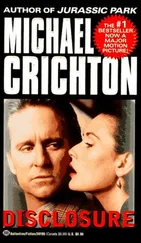Physical inventories are generally taken within each merchandise department annually, and inventory records are adjusted accordingly, resulting in the recording of actual shrinkage. Physical inventories are taken at all store locations for substantially all merchandise categories approximately three weeks before the end of the year. Shrinkage is estimated as a percentage of sales at interim periods and for this approximate three‐week period, based on historical shrinkage rates. While it is not possible to quantify the impact from each cause of shrinkage, the Company has loss prevention programs and policies that are intended to minimize shrinkage, including the use of radio frequency identification cycle counts and interim inventories to keep the Company's merchandise files accurate.
Property and Equipment and Depreciation Methods
Example 7.41: Property and Equipment, Net, Straight‐Line Depreciation Method and Impairment PolicyNet property and equipment are stated at historical cost less accumulated depreciation. Historical cost comprises its purchase price and any directly attributable costs of bringing the assets to its working condition and location for its intended use. Depreciation is calculated on a straight‐line basis over the following estimated useful lives:
| Buildings |
20 years |
| Motor vehicles |
5–10 years |
| Furniture and office equipment |
3–5 years |
| Leasehold improvements |
Shorter of lease term or useful lives |
The carrying value of a long‐lived asset is considered impaired by the Company when the anticipated undiscounted cash flows from such asset is less than its carrying value. If impairment is identified, a loss is recognized based on the amount by which the carrying value exceeds the fair value of the long‐lived asset. Fair value is determined primarily using the anticipated cash flows discounted at a rate commensurate with the risk involved or based on independent appraisals. Management has determined that there were no impairments at the balance sheet dates.
Example 7.42: Property and Equipment, Net, Declining Balance Depreciation MethodProperty and equipment are stated at cost. Expenditures for maintenance and repairs are charged to earnings as incurred; additions, renewals and betterments are capitalized. When property and equipment are retired or otherwise disposed of, the related cost and accumulated depreciation are removed from the respective accounts, and any gain or loss is included in operations. Depreciation of property and equipment is provided using the declining balance method for substantially all assets with estimated lives as follows:
| Leasehold improvements |
5 years |
| Clinical equipment |
5 years |
| Computer equipment |
3 years |
| Office equipment |
5 years |
| Furniture and fixtures |
5 years |
Example 7.43: Long‐lived Assets—Impairment or DisposalThe Company applies the provisions of ASC Topic 360, Property, Plant, and Equipment , which addresses financial accounting and reporting for the impairment or disposal of long‐lived assets. ASC 360 requires impairment losses to be recorded on long‐lived assets used in operations when indicators of impairment are present and the discounted cash flows estimated to be generated by those assets are less than the assets' carrying amounts. In that event, a loss is recognized based on the amount by which the carrying amount exceeds the fair value of the long‐lived assets. Loss on long‐lived assets to be disposed of is determined in a similar manner, except that fair values are reduced for the cost of disposal. Based on its review at August 31, 20X2 and 20X1, the Company believes there was no impairment of its long‐lived assets.
Example 7.44: Nature of OperationsRJ, Inc. and subsidiaries (the “Company”) is an omnichannel retail organization operating stores, websites and mobile applications under three brands (TJ's, Chelsea's and bluestar) that sell a wide range of merchandise, including apparel and accessories (men's, women's, and children's), cosmetics, home furnishings and other consumer goods. The Company has stores in 34 states, the District of Columbia and Puerto Rico. As of February 2, 20X3, the Company's operations and operating segments were conducted through RJ's, TJ's, Chelsea's, RJ's Off Rack, and bluestar, which are aggregated into one reporting segment in accordance with the Financial Accounting Standards Board (“FASB”) Accounting Standards Codification (“ASC”) Topic 280, Segment Reporting . The metrics used by management to assess the performance of the Company's operating divisions include sales trends, gross margin rates, expense rates, and rates of earnings before interest and taxes (“EBIT”) and earnings before interest, taxes, depreciation and amortization (“EBITDA”). The Company's operating divisions have historically had similar economic characteristics and are expected to have similar economic characteristics and long‐term financial performance in future periods.
Example 7.45: Revenue Recognition under ASC 606 with Effects of Adoption of ASU 2014‐09ASU 2014‐09, Revenue from Contracts with Customers (“Topic 606”), became effective for the Company on March 1, 2018. The Company's revenue recognition disclosure reflects its updated accounting policies that are affected by this new standard. The Company applied the “modified retrospective” transition method for open contracts for the implementation of Topic 606. As sales are and have been primarily from providing eyecare services, and the Company has no significant post‐delivery obligations, this new standard did not result in a material recognition of revenue on the Company's accompanying consolidated financial statements for the cumulative impact of applying this new standard. The Company made no adjustments to its previously reported total revenues, as those periods continue to be presented in accordance with its historical accounting practices under Topic 605, Revenue Recognition .
Revenue from providing eyecare services are recognized under Topic 606 in a manner that reasonably reflects the delivery of its services to customers in return for expected consideration and includes the following five elements:
1 Executed contracts with the Company's customers that it believes are legally enforceable;
2 Identification of performance obligations in the respective contract;
3 Determination of the transaction price for each performance obligation in the respective contract;
4 Allocation the transaction price to each performance obligation; and
5 Recognition of revenue only when the Company satisfies each performance obligation.
These five elements, as applied to the Company's revenue category, are summarized below:
Eyecare services—gross service revenue is recorded in the accounting records at the time the services is provided on an accrual basis at the provider's established rates, regardless of whether the provider expects to collect that amount. The Company reserves a provision for contractual adjustment and discounts that are deducted from gross service revenue. The Company reports revenues net of any sales taxes.
Example 7.46: Revenue Recognition under ASC 606, Including Policies Regarding Performance Obligations, Estimated Returns, Shipping Fees, and Gift CardsNet revenue is comprised of company‐operated store net revenue, direct to consumer net revenue through websites and mobile apps, including mobile apps on in‐store devices that allow demand to be fulfilled via the Company's distribution centers, and other net revenue, which includes revenue from outlets, temporary locations, sales to wholesale accounts, showrooms, warehouse sales, and license and supply arrangement net revenue, which consists of royalties as well as sales of the Company's products to licensees. All revenue is reported net of sales taxes collected from customers on behalf of taxing authorities.
Читать дальше












